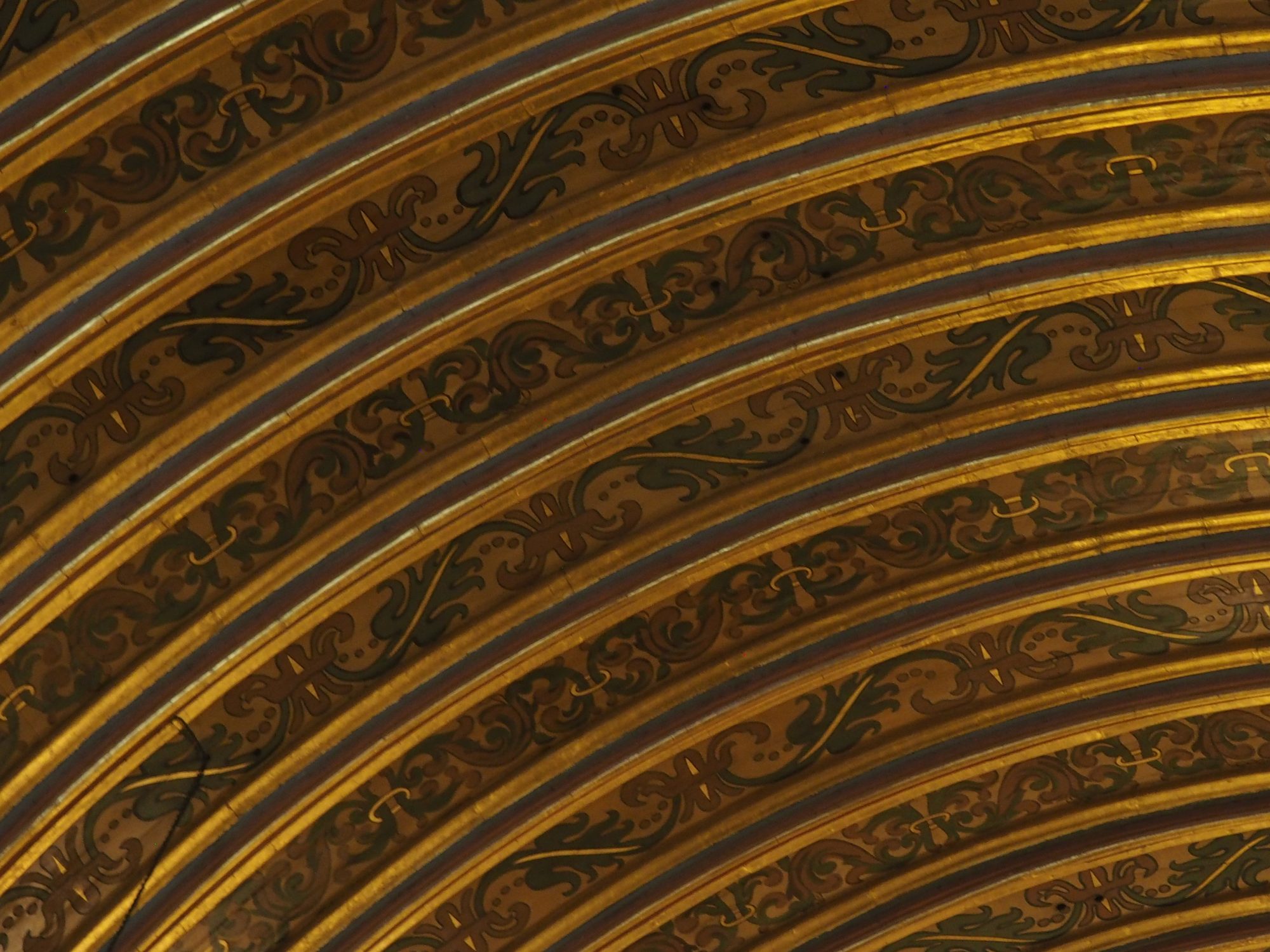Histoire de l’évangélisation jésuite et de la rencontre entre deux civilisations
/ History of Jesuit evangelization and the encounter between two civilizations
Lorsque la compagnie de Jésus (plus couramment appelé « ordre jésuite ») est créée en 1540, ses deux principales missions sont l’éducation et l’évangélisation. Les frères jésuites arrivent au Brésil en 1549 et s’installent ensuite à partir de 1609 dans le territoire guarani, à cheval sur les frontières actuelles du Brésil, du Paraguay de l’Argentine et de l’Uruguay. Ils obtiennent l’autorisation du roi d’Espagne d’y former un état autonome et l’ordre va y ériger plusieurs fermes, des villages et même une capitale : Cordoba. Cette organisation prospéra pendant plus d’un siècle, et connaitra son apogée dans les années 1700 à 1750.
When the Society of Jesus (more commonly called the « Jesuit Order ») is created in 1540, its two main missions are education and evangelization. The Jesuit brothers arrived in Brazil in 1549 and then settled from 1609 in the Guarani Territory, straddling the current borders of Brazil, Paraguay of Argentina and Uruguay. They obtain the permission of the king of Spain to form an autonomous state where the order will erect several farms, villages and even a capital, Cordoba. This organization prospered for more than a century with an apogee between the years 1700 and 1750.
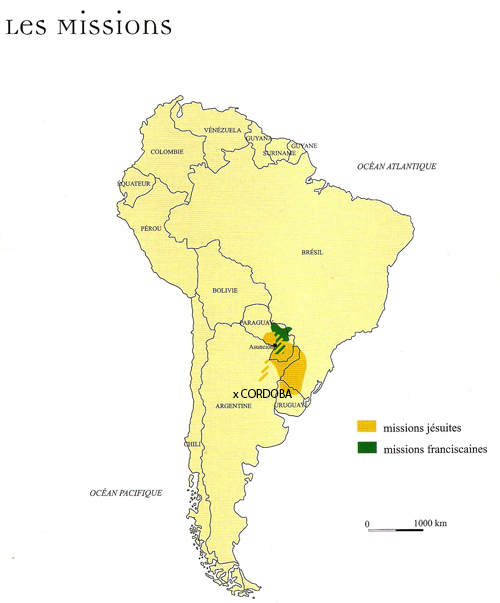
Map of the jesuit and franciscan mission, unknown autor
En 1769 pourtant, ce système s’effondre brutalement : accusés d’ingérence politique, les Jésuites furent expulsés d’Amérique du Sud, par le nouveau roi d’Espagne Charles III.
Les fermes et l’université de Cordoba continuèrent à prospérer sous le contrôle de nouveaux propriétaires *3, en revanche, ce sera la fin des missions jésuites, qui, affaiblies, tombèrent peu à peu dans l’oubli et furent envahies par la jungle.
In 1769, however, this system collapsed abruptly: accused of political interference, the Jesuits were expelled from South America by the new king of Spain Charles III.
The farms and the University of Cordova continued to thrive under the control of new owners * 3, on the other hand, it will be the end of the Jesuit missions, which, weakened, fell little by little into oblivion and were invaded by the jungle.
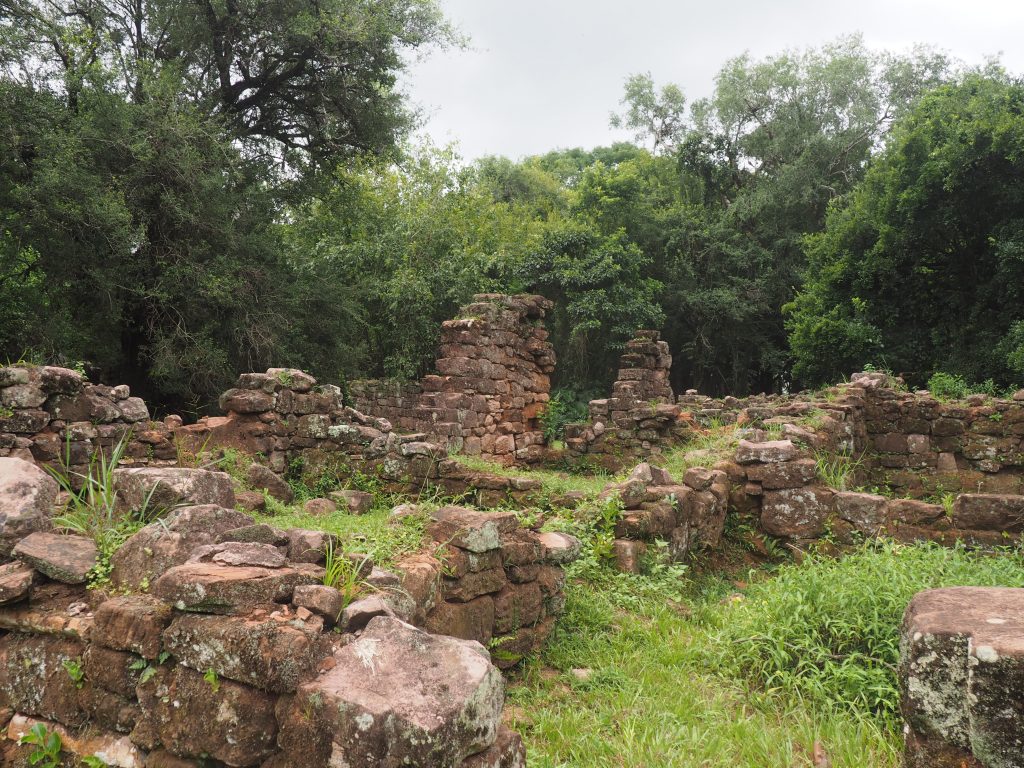
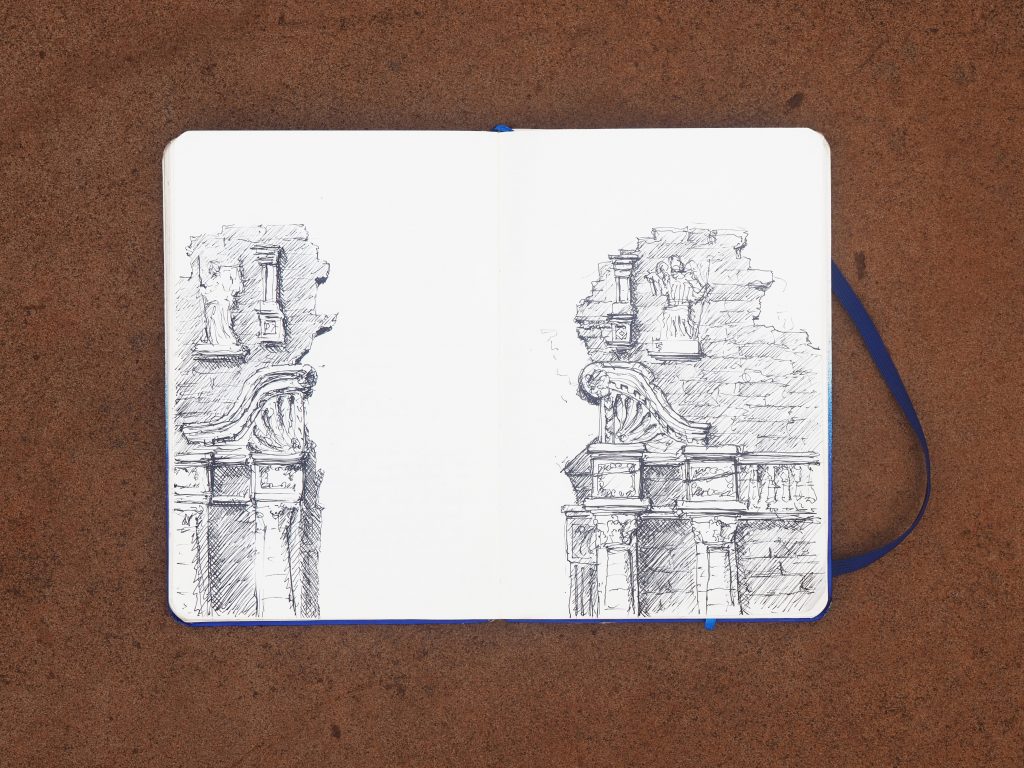
Les missions, première cohabitation entre Aborigènes et Jésuites –The missions, first cohabitation between Aborigines and Jesuits
Lorsque les premiers pères Jésuites s’aventurent dans le territoire du peuple guarani, ils rencontrent une population primitive, maltraitée par les colons qui organisent régulièrement des razzias pour en faire des esclaves. Très vite, les Jésuites s’attirent l’admiration des Guaranis par leurs arts, leur musique et leur science, en particulier leur maîtrise de la médecine. En leur offrant leur protection, les pères jésuites se font peu à peu accepter par les communautés.
Dans le premiers temps, les Jésuites apprennent la langue guarani et sont soucieux de ne pas bouleverser trop vite leur structure sociale. Ainsi, une hiérarchie laïque persiste à côté du pouvoir religieux et les missions sont codirigés par les pères jésuites et les dignitaires indigènes.
Les pères jésuites vont faire construire des villages, appelés « missions » ou « réductions », où quelques pères et aides de camps vivront en compagnie des indiens. A l’apogée du système, la région comptera une trentaine de missions différentes dans lesquelles habitent près de 140 000 Guaranis christianisés. *1
Chaque mission est construite sur le même plan : la « place d’armes », au centre du village est le lieu de la vie laïque et religieuse. Sur trois des côtés de cette place rectangulaire, les bâtiments publics soint eux-même entourés d’îlots d’habitation.
Sur le dernier côté de cette place, un axe marque une délimitation franche : au delà se concentrent les activités économiques et religieuses. L’église est placée symboliquement face à la place ; un premier cloître, adossé à l’église, abrite la résidence des Jésuites, un second patio regroupe les manufactures et ateliers. De l’autre côté de l’église se trouvent un cimetière et parfois un hôpital ou une prison.
When the first Jesuit Fathers ventured into the territory of the Guarani people, they met a primitive population persecuted by settlers who regularly organized raids to make them slaves. Very soon, the Jesuits attracted the admiration of the Guaranis by their arts, music and science, in particular their mastery of medicine. By offering them protection, the Jesuits were gradually being accepted by the communities.
The Jesuits learn the Guarani language and are anxious not to upset their social structure too quickly. Thus, a secular hierarchy persists alongside the religious power and the missions are co-led by the Jesuit Fathers and the indigenous dignitaries.
Under the command of Jesuits, the Guaranis began to build several villages, called « missions » where some fathers and their assistants will live in the company of the Indians. At the appogee of this system, the region will have about thirty different missions hosting close to 140 000
Christianized Guaranis . * 1
Each mission is built on the same model. The « military square » in the center is the place of secular and religious life. On three sides of this rectangular square the public buildings are surrounded by habitation blocks.
On the last side of this square, an axis marks a frank delimitation: the economic and religious activities are all concentrated beyond that line. The church is symbolically placed in front of the square; A first cloister, backed by the church, houses the Jesuit residence, a second patio houses factories and workshops. On the other side of the church, the fathers have build a cemetery and sometimes a hospital or a prison.
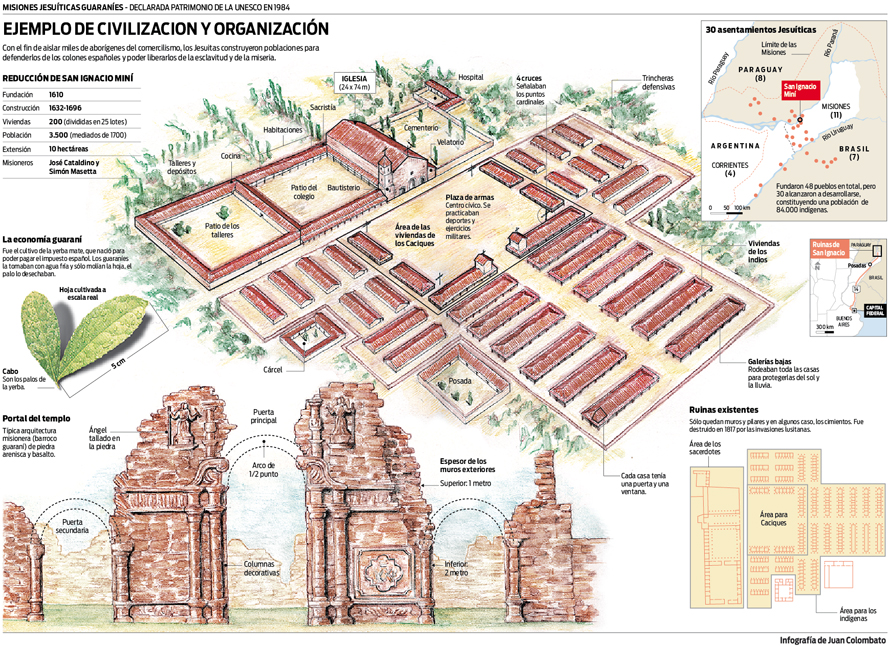
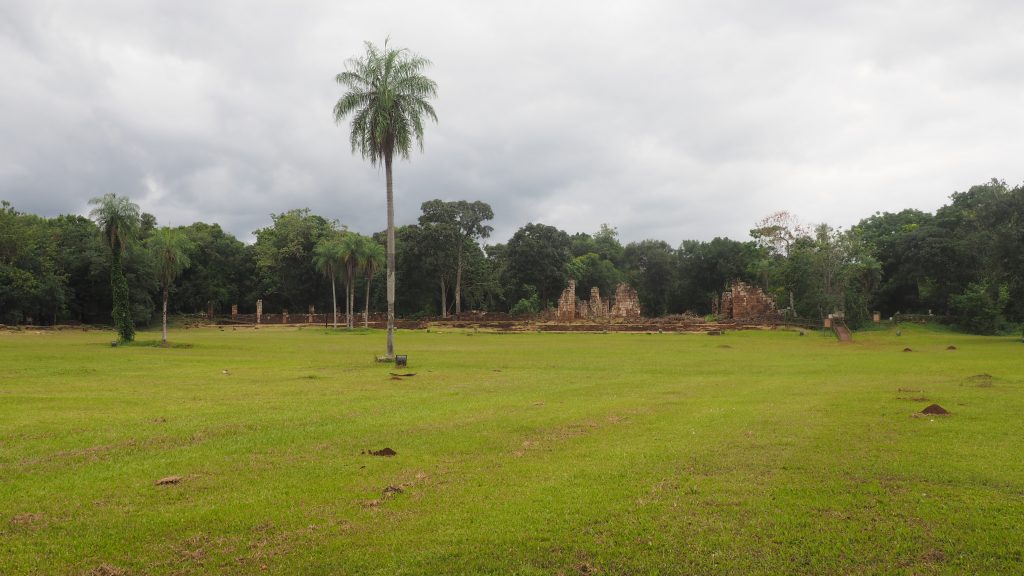
Les îlots d’habitations sont tous construits sur le même modèle et leur architecture rappelle la maison traditionnelle du peuple guarani : la »casa larga » qui regroupe alors plusieurs familles. Quand les Jésuites introduisent le concept de famille monogame chrétienne, l’intérieur des maisons fut divisé en plusieurs habitations dans lesquelles se répartirent les familles.*2
The architecture of the habitation blocks reminds the traditional house of the Guarani people: the pre-Hispanic « Casa Larga » which host several families together. When the Jesuits introduced the concept of a Christian monogamous family, the interior of the houses was divided into several dwellings where the families were spread. * 2
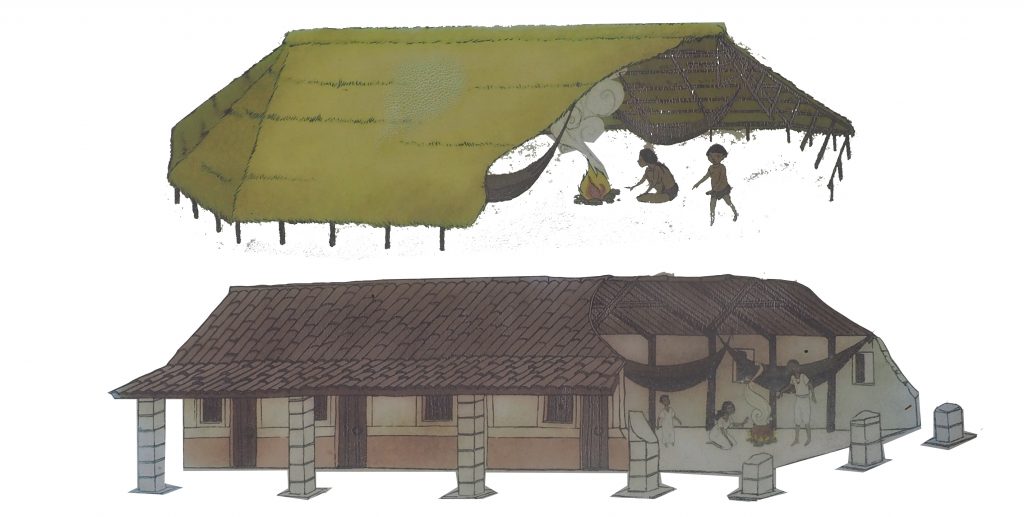
Peu à peu, le lien de confiance entre les deux communautés se renforcèrent et les Jésuites réussirent supprimer la polygamie, la nudité ou encore à modifier les coutumes funéraires. *1
Bénéficiant de l’enseignement des Jésuites, les Guaranis vont maîtriser très rapidement un certain nombre de techniques (les habitants des missions seraient le premier peuple à être entièrement alphabétisé*1). A proximité de leur lieu de résidence, la Compagnie de Jésus fait construire des manufactures de poteries et de textile, un atelier de charpentier ainsi qu’une forge (les guaranis ne connaissait toujours pas l’usage du fer). Chaque individu a une tache précise dans la société, la plupart des villageois travaillant dans les champs. Les journées de travail passaient pour être exceptionnellement courtes pour l’époque et tous les bénéfices du travail étaient mis en commun et partagés équitablement entre chaque villageois. *1
Little by little, the bond of trust between the two communities strengthened and the Jesuits succeeded in suppressing polygamy, nudity or altering the burial habits. * 1
Benefiting from the teaching of the Jesuits (the Guaranis of the missions would be the first people to be fully literate * 1) The Guaranis will master very quickly a certain number of techniques. Near their place of residence, the Jesuits built pottery and textile factories, a carpenter’s workshop and a forge (the Guaranis did not yet know the use of iron). Each individual has a specific role in the society, most of the villagers are working in the fields. The working days were exceptionally short for the time (6h versus a dozen in Europe). All the benefits of the work were pooled and shared equitably between each villager. * 1
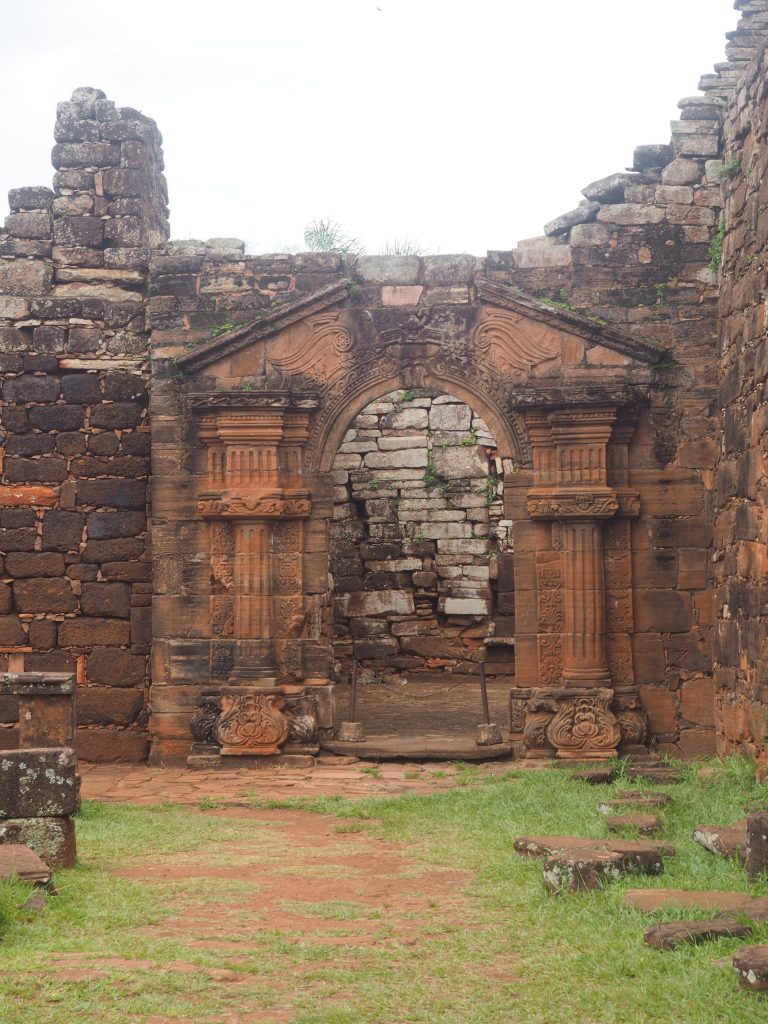
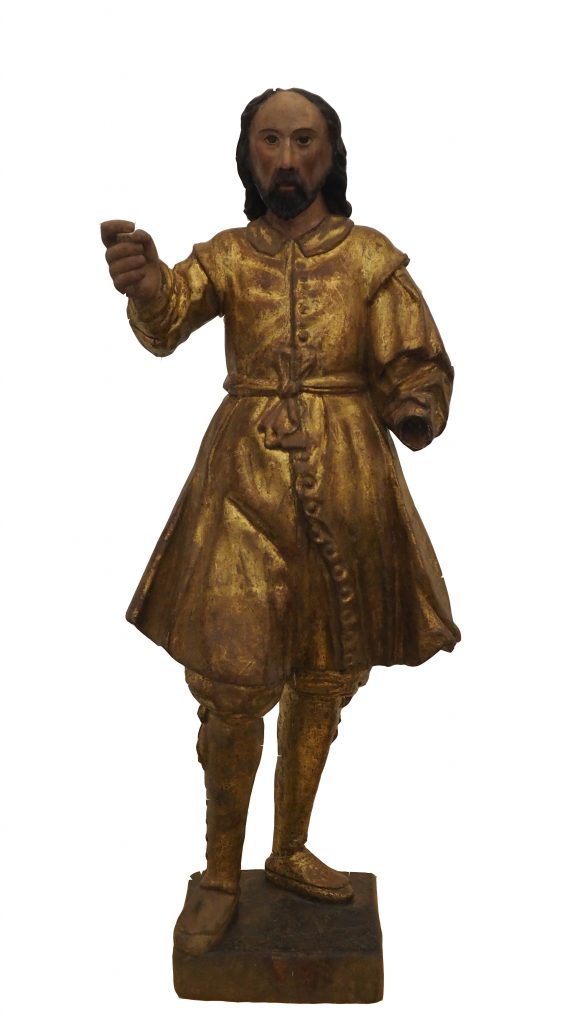
Saint Isidore, patron of the peasants, jesuit’s guarani missions, XVIIIth c ?
Dans le nouveau monde, l’art ne se limite pas qu’à un rôle décoratif : il sert aussi et surtout à évangéliser. L’architecture, la musique et la sculpture doivent impressionner les indigènes ; l’art sert également à faire connaître les figures fondamentales de la religion chrétienne.
Les premières œuvres chrétiennes d’Amérique du Sud sont originaires d’Europe. Les mains et les visages de certaines sculptures ont été acheminés en bateau, alors que le corps, ou plutôt le squelette de la sculpture, qui sera souvent caché sous les vêtements, fut souvent fabriqué dans le nouveau monde.
Au fil du développement des missions, de plus en plus d’œuvres furent fabriquées par les indigènes. En opposition avec les représentations européennes, les œuvres de l’art « hispano américain » sont plus simples, réalisées rapidement avec des matériaux locaux (le plus souvent du bois) dans le but de satisfaire le plus vite possible les commandes des couvents, des églises ou des particuliers *3.
En quelques générations, les Guaranis deviennent d’ailleurs des maîtres en ce domaine et produisent des œuvres qui seront envoyées aux quatre coins du continent et même jusqu’en Europe.
In the new world, art does not only have a decorative role: it also serves to evangelize. Architecture, music and sculpture must impress the natives. Art also serves to make known the fundamental figures of the Christian religion.
The first Christian works from South America were imported from Europe. The hands and faces of some of the sculptures were transported by boat, while the body, or rather the skeleton of the sculpture, hidden under clothing, was often made in the New WorldAs the missions developed, more and more works inspired by European iconography were made by the natives. In opposition to european representations, the works of the art made in South America are simpler and realized quickly with local materials – most often wood- in order to satisfy as quickly as possible the orders from convents, churches or individuals * 3. In a few generations, the Guaranís became masters in this field and produce works that will be sent to all corners of the country and even to Europe.
based on the hisory of the paraguayan missions
Cordoba, le cœur de la province jésuite / Cordoba, center of the jesuit province
En 1599 , la toute récente ville de Cordoba fut choisie par les jésuites pour devenir la capitale de leur province. En 1610, ils y construisent une université, « la Manzana », la seconde plus vieille université d’Amérique Latine. Elle occupe deux îlots au cœur de la ville dans lesquels on trouve un collège, une université, une résidence ainsi que l’église jésuite.
Comme dans le reste du pays, le fer et la pierre de taille n’étaient que peu exploités. Ces contraintes ont conduit les architectes à réaliser des murs en moellons, souvent épais de plusieurs mètres dans lesquels les fenêtres se font très rares.
In 1599, the recent city of Cordoba was chosen by the Jesuits to become the capital of their province. In 1610, they built a university, the so called « Manzana » witch is the second oldest university in Latin America. It takes place in two blocs in the the city center, where they built a college, a university, a residence and the Jesuit church.
As in the rest of the country, iron was scarce in the region and also cut stone. These constraints led the architects to create rubble walls, often several meters thick in which the windows are very rare.
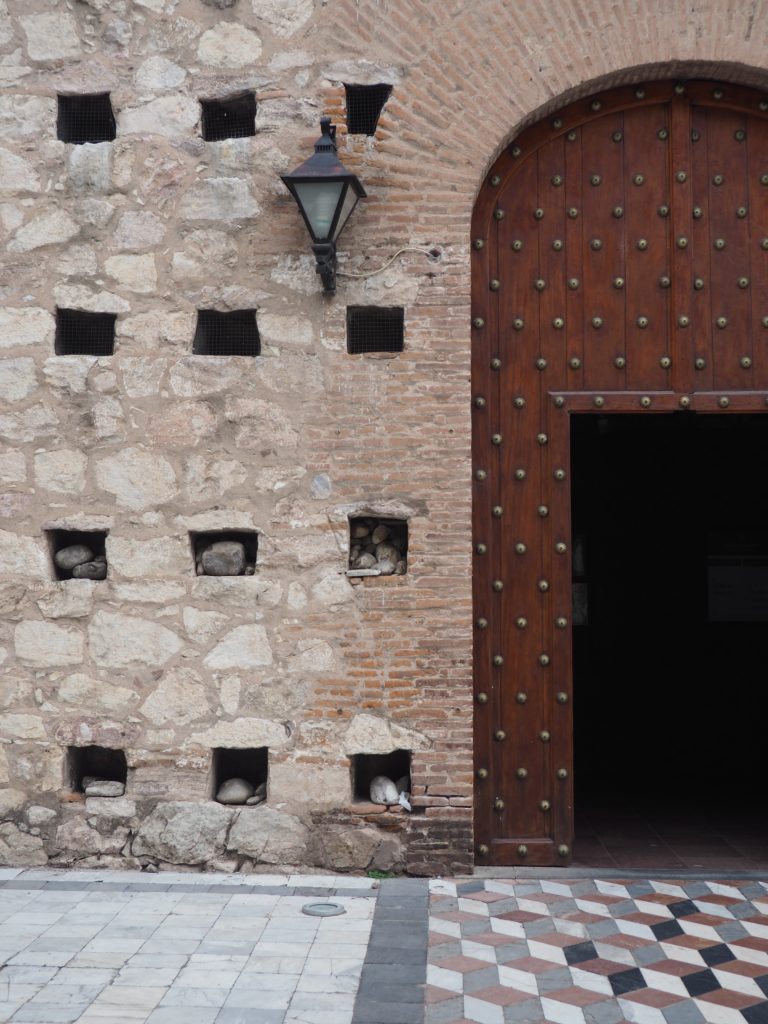
La voûte fut imaginée par un père jésuite, charpentier de formation. Elle est uniquement réalisée en bois, probablement avec des éléments de petites dimensions importés des missions du Nord-Est. La plupart des sculptures fut elle aussi fabriquée dans les missions jésuites ainsi que le retable, transporté en pièces détachées.
The vault was imagined by a Jesuit father, a trained carpenter. It is only made of wood, probably with small elements imported from the Northeast missions. Most of the sculptures were also made in the Jesuit missions as the altarpiece whitch was transported in parts.
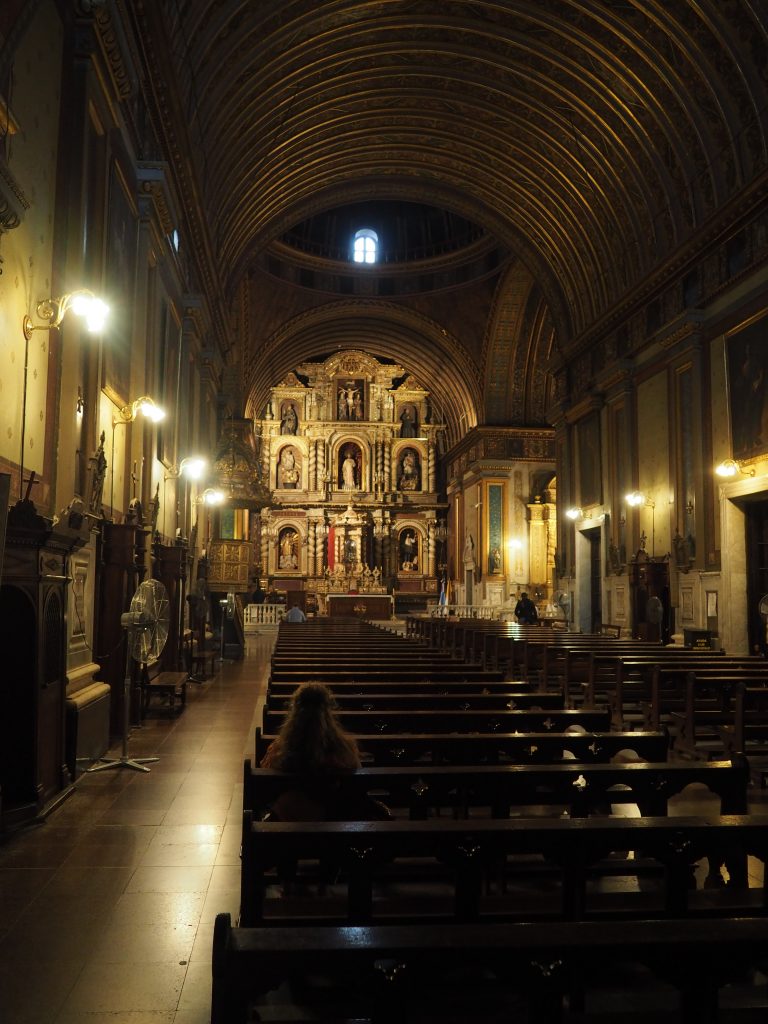
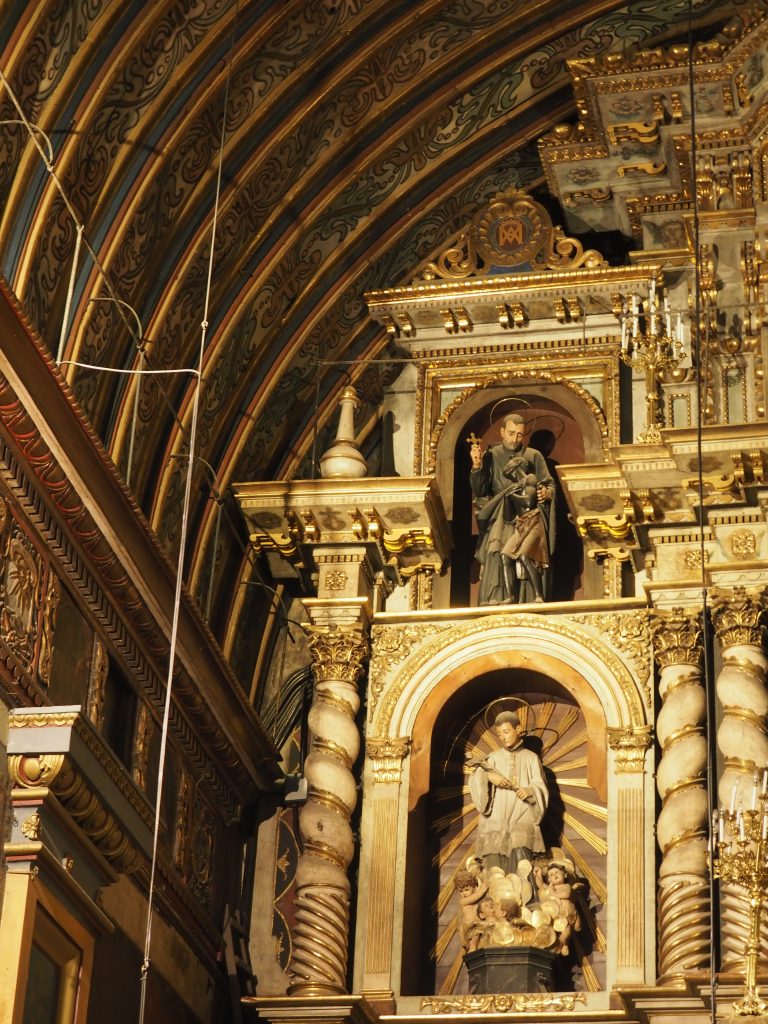
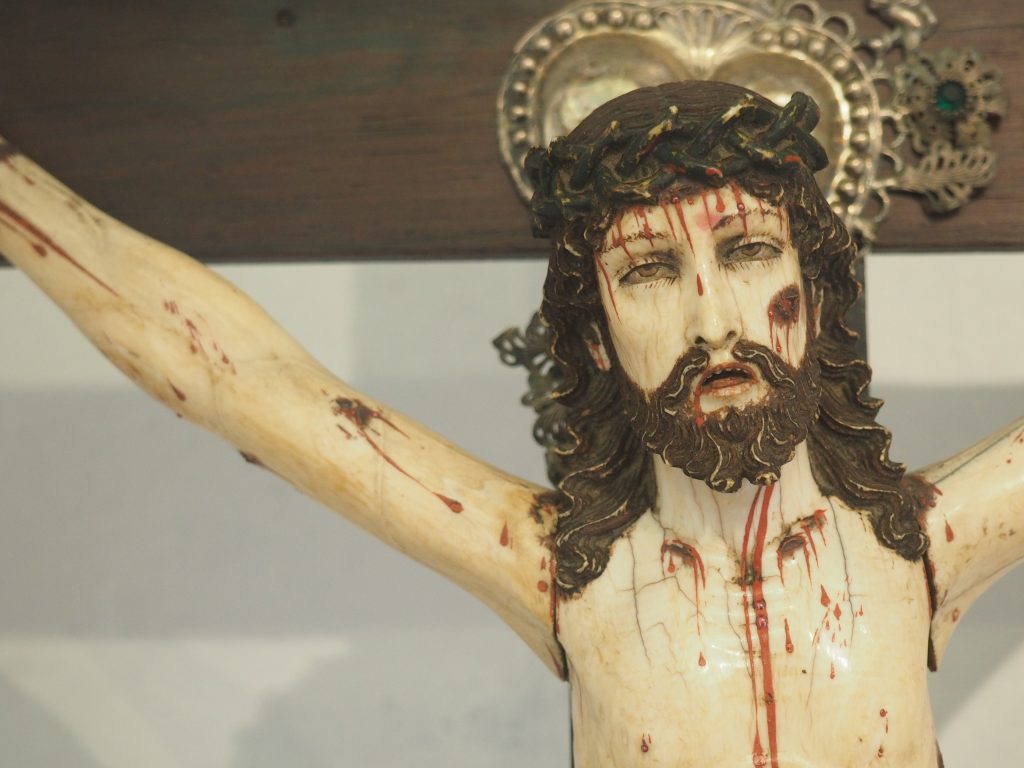
Après l’expulsion de la Compagnie de Jésus, l’université fut dirigée par les frères franciscains avant d’être nationalisée en 1820. L’université de Cordoba est aujourd’hui l’une des plus réputée d’Amérique Latine et accueille maintenant près de 160 000 étudiants.
After the expulsion of the Jesuits, the university was led by the Franciscans before being nationalized in 1820. The University of Cordoba is now one of the most famous in Latin America and now hosts nearly 160,000 students.
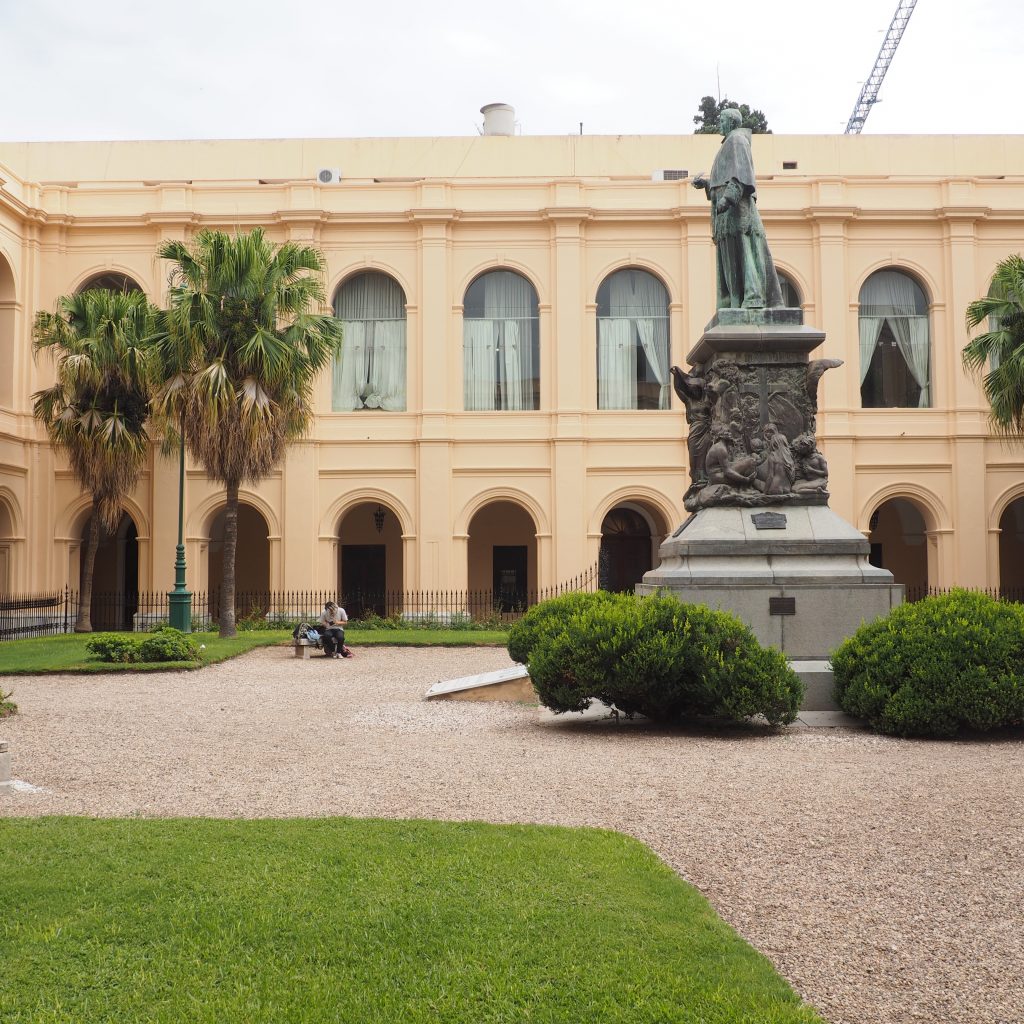
Les estancias jésuites, des exploitations pour financer l’université –Jesuit estancias, farms to finance the university
Quelques années après que les Jésuites se soient installés à Cordoba, le royaume d’Espagne décida de couper ses financements à l’ordre jésuite, suite à des tensions politiques. L’ordre réagit alors en créant des exploitations agricoles autour de Cordoba pour financer le développement de l’université. Ces fermes, les « estancias », sont au nombre de six, éparpillées dans un cercle de 150km autour de Cordoba. Les indigènes et des centaines esclaves noirs y produisent blé, maïs, farine, légumes, ou vins sous le contrôle d’une poignée de pères jésuites (souvent deux ou trois par estancia).
L’évangélisation des indigènes et des esclaves restait l’une des prérogatives de l’ordre en particulier dans ces domaines isolés. Cette mission explique la présence de chapelle ou d’église, parfois richement décorées, dans chacune des estancias.
A few years after the Jesuits settled in Cordoba, the kingdom of Spain decided to cut its funding to the Jesuit order, following political tensions. The order then reacts by creating farms around Cordoba to finance the development of the university. These six farms, the estancias, are scattered in a circle of 150km around Cordoba. The natives and hundreds of black slaves produce wheat, corn, flour, vegetables, or wines under the control of a handful of Jesuit fathers (often two or three per estancia).
The evangelization of natives and slaves remained one of the prerogatives of order, particularly in these isolated areas. This mission explains the presence of chapels or churches – sometimes richly decorated – in each estancia.
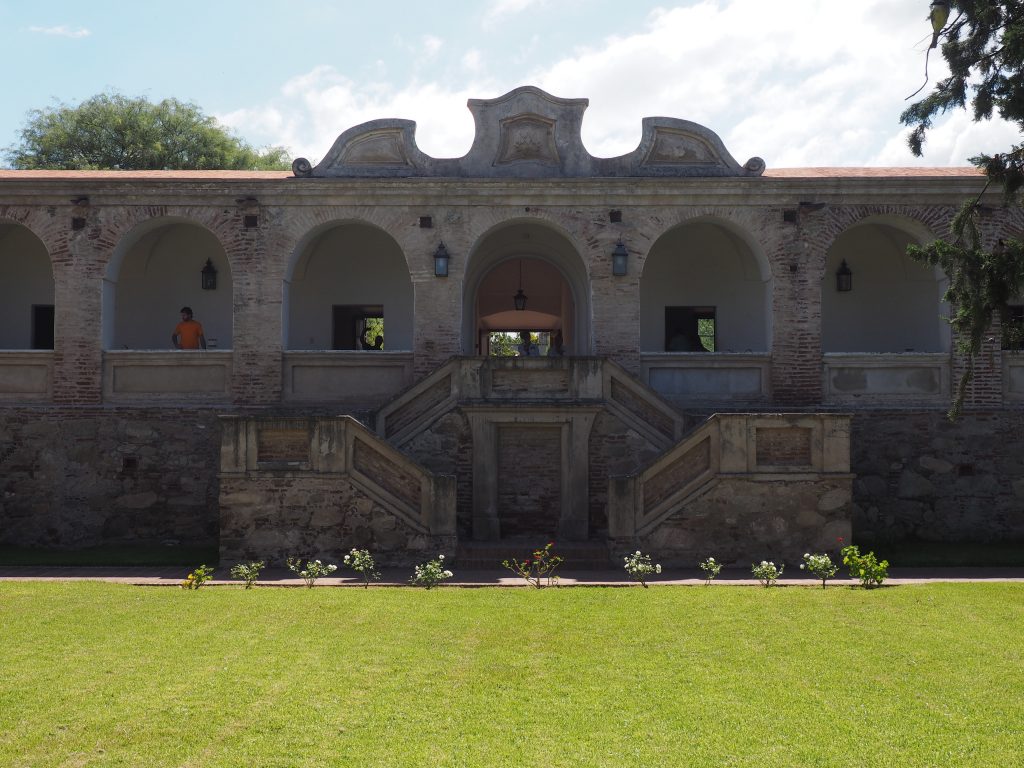
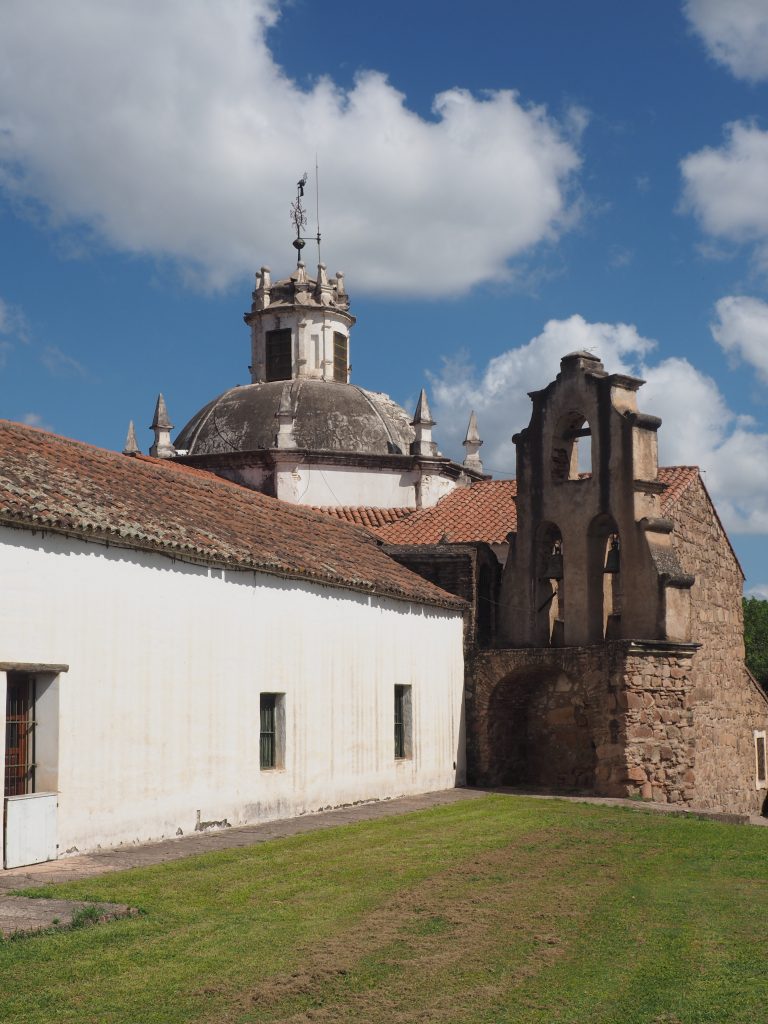
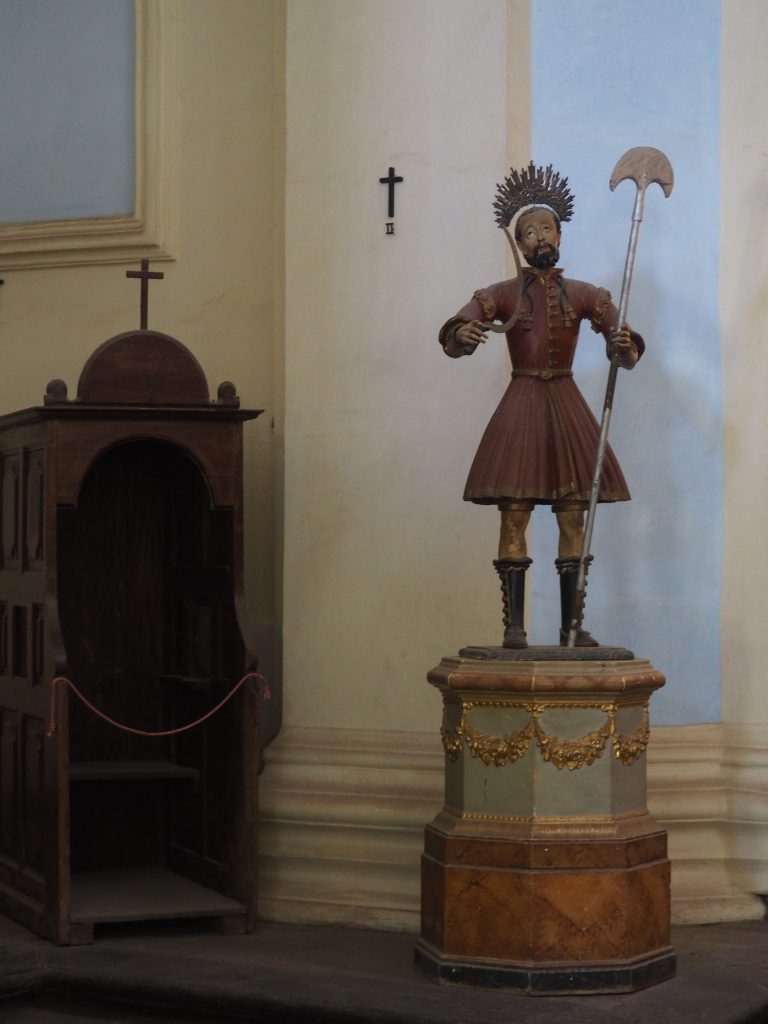
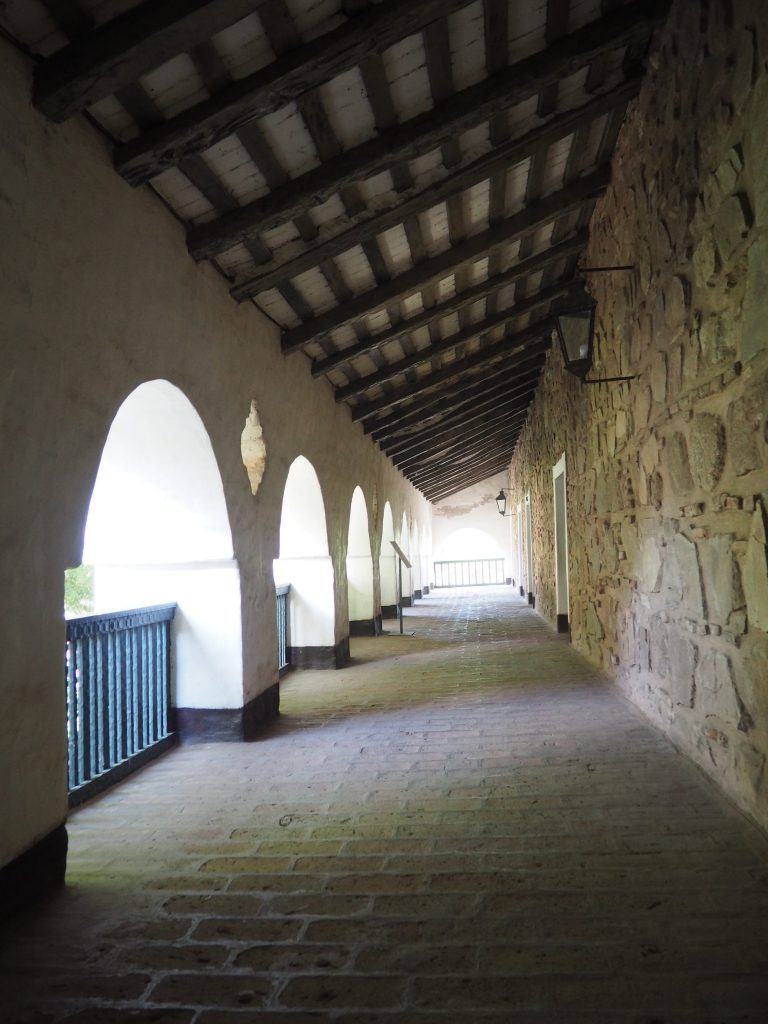
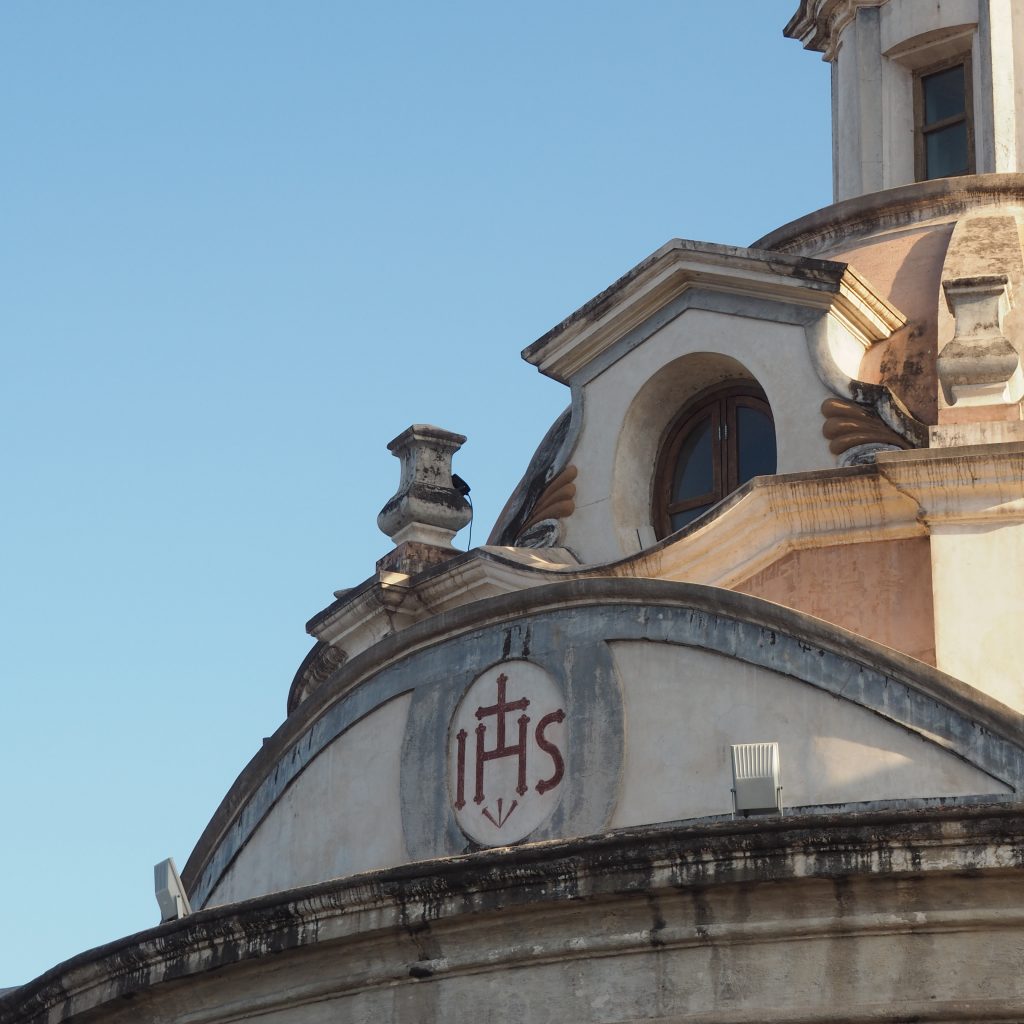
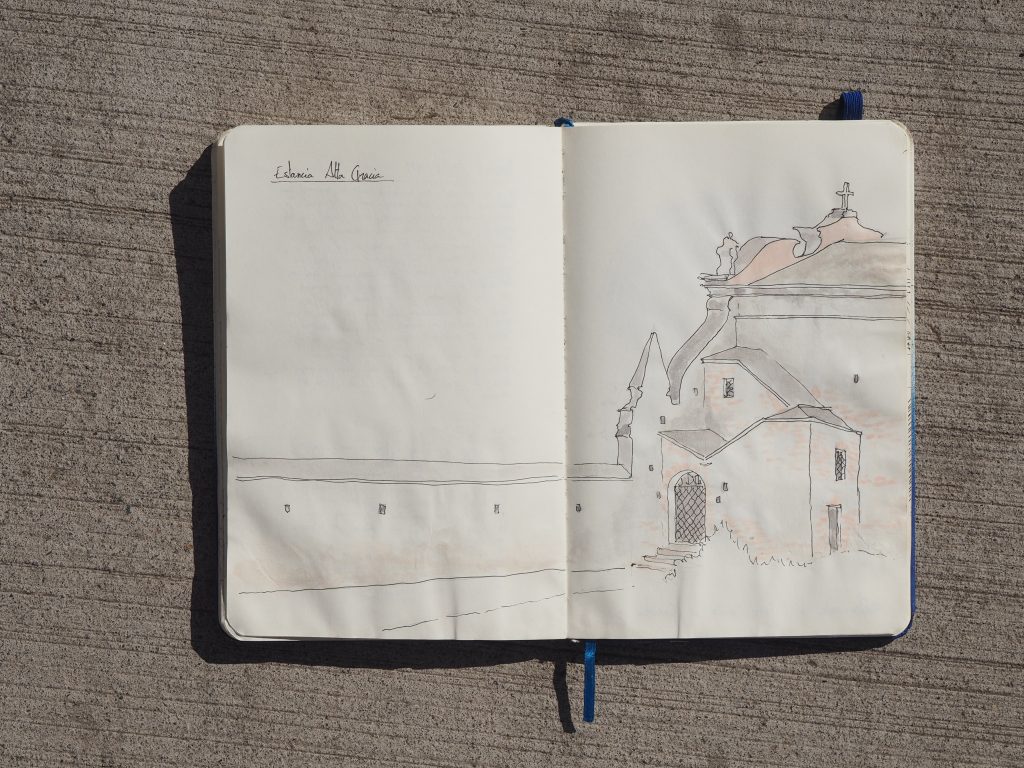
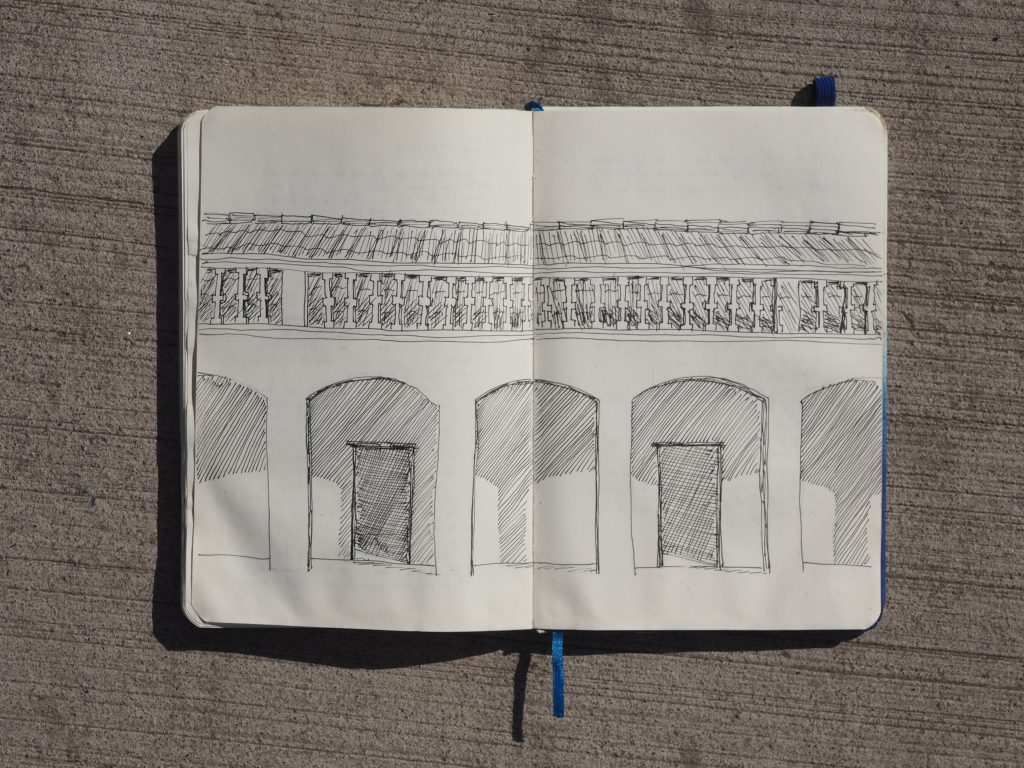
*1 : « Le Routard : Argentine, 2019 » éditions Hachette
*2 : Musées des Misions de San Ignacio Mini et San Ana
*3 : Musée de la Manzana Jesuite, Cordoba
*4 : « Camino de las Estancias Jesuiticas », agencia Cordoba Turistico
*5: Musées de l’Estancia Jesus Maria et Caroya
by baptiste quételart – architect / architectural reporter
